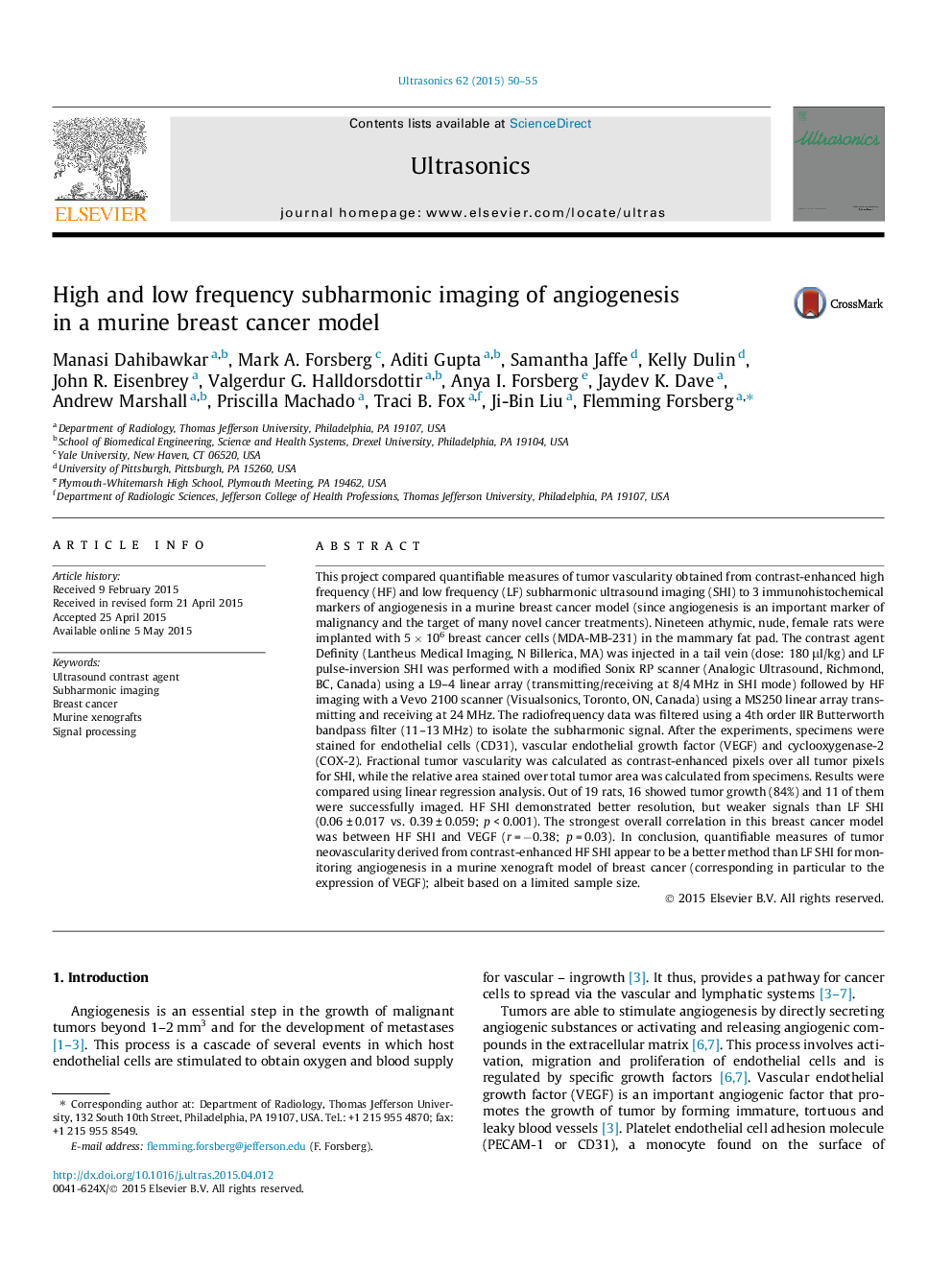| Article ID | Journal | Published Year | Pages | File Type |
|---|---|---|---|---|
| 8130515 | Ultrasonics | 2015 | 6 Pages |
Abstract
This project compared quantifiable measures of tumor vascularity obtained from contrast-enhanced high frequency (HF) and low frequency (LF) subharmonic ultrasound imaging (SHI) to 3 immunohistochemical markers of angiogenesis in a murine breast cancer model (since angiogenesis is an important marker of malignancy and the target of many novel cancer treatments). Nineteen athymic, nude, female rats were implanted with 5 Ã 106 breast cancer cells (MDA-MB-231) in the mammary fat pad. The contrast agent Definity (Lantheus Medical Imaging, N Billerica, MA) was injected in a tail vein (dose: 180 μl/kg) and LF pulse-inversion SHI was performed with a modified Sonix RP scanner (Analogic Ultrasound, Richmond, BC, Canada) using a L9-4 linear array (transmitting/receiving at 8/4 MHz in SHI mode) followed by HF imaging with a Vevo 2100 scanner (Visualsonics, Toronto, ON, Canada) using a MS250 linear array transmitting and receiving at 24 MHz. The radiofrequency data was filtered using a 4th order IIR Butterworth bandpass filter (11-13 MHz) to isolate the subharmonic signal. After the experiments, specimens were stained for endothelial cells (CD31), vascular endothelial growth factor (VEGF) and cyclooxygenase-2 (COX-2). Fractional tumor vascularity was calculated as contrast-enhanced pixels over all tumor pixels for SHI, while the relative area stained over total tumor area was calculated from specimens. Results were compared using linear regression analysis. Out of 19 rats, 16 showed tumor growth (84%) and 11 of them were successfully imaged. HF SHI demonstrated better resolution, but weaker signals than LF SHI (0.06 ± 0.017 vs. 0.39 ± 0.059; p < 0.001). The strongest overall correlation in this breast cancer model was between HF SHI and VEGF (r = â0.38; p = 0.03). In conclusion, quantifiable measures of tumor neovascularity derived from contrast-enhanced HF SHI appear to be a better method than LF SHI for monitoring angiogenesis in a murine xenograft model of breast cancer (corresponding in particular to the expression of VEGF); albeit based on a limited sample size.
Related Topics
Physical Sciences and Engineering
Physics and Astronomy
Acoustics and Ultrasonics
Authors
Manasi Dahibawkar, Mark A. Forsberg, Aditi Gupta, Samantha Jaffe, Kelly Dulin, John R. Eisenbrey, Valgerdur G. Halldorsdottir, Anya I. Forsberg, Jaydev K. Dave, Andrew Marshall, Priscilla Machado, Traci B. Fox, Ji-Bin Liu, Flemming Forsberg,
